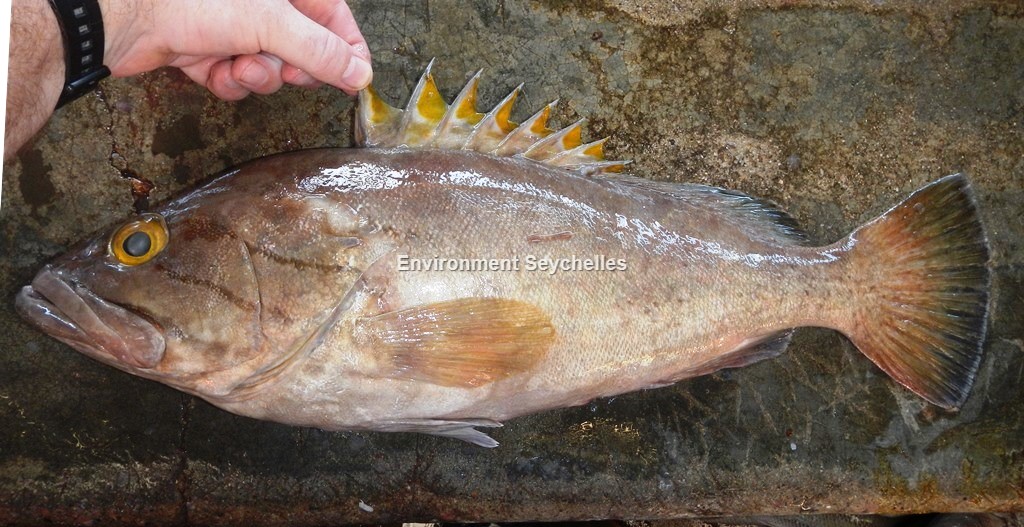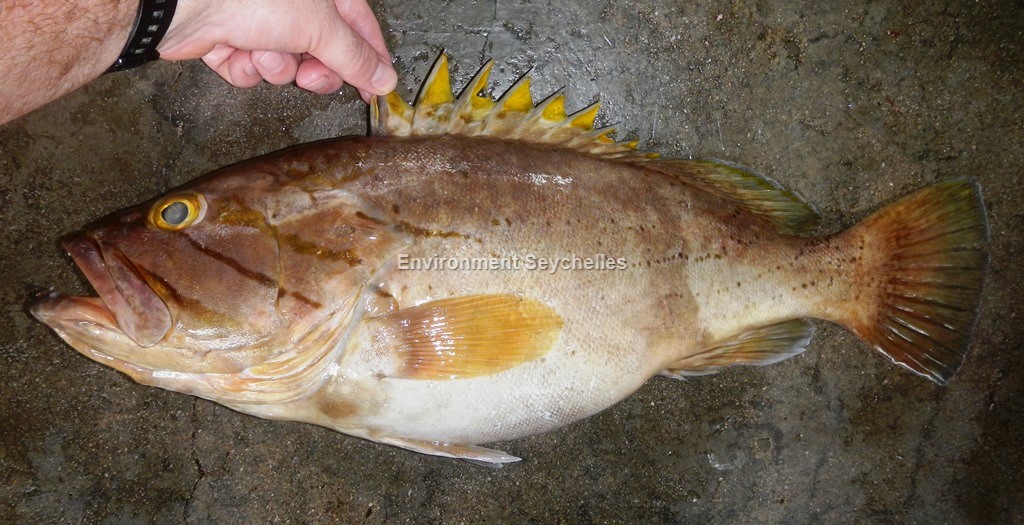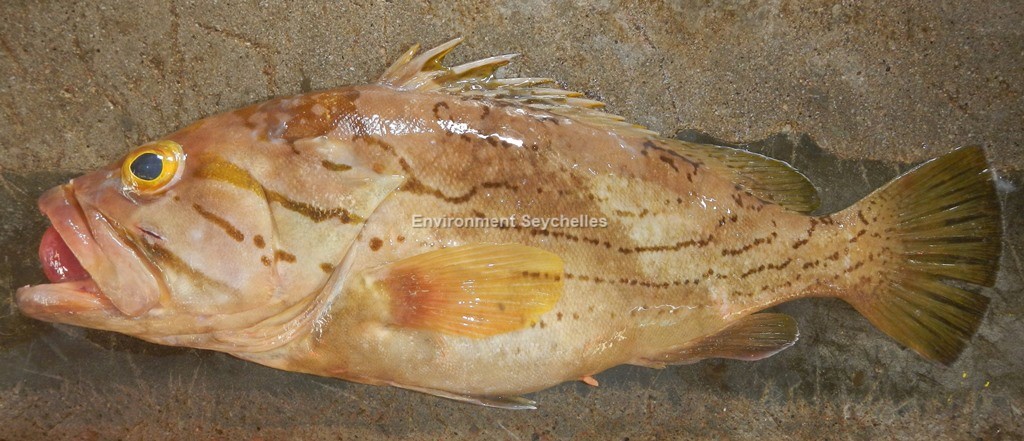Description:
Dorsal spines: 11; Dorsal rays: 14-15; Anal spines: 3; Anal rays: 8.
Medium to large, moderately full-bodied grouper. Posterior nostrils larger than anterior. Maxilla reaches about to vertical at rear edge of eye. Midlateral part of lower jaw
with 2 rows of teeth. Dorsal fin interspinous membranes deeply incised. Caudal fin convex.
Colour. Small juveniles pale yellowish grey, with oval black blotch on body between bases of third to ninth dorsal-fin spines. A semicircular pale band passes ventrally
around the oval black blotch and isolates it from a dark brown band that begins broadly on nape and bifurcates just behind operculum, the upper branch curving dorsally and
expanding broadly over basal half of dorsal fin. The lower branch also curves dorsally and expanding at base of the last 4 dorsal-fin rays. A second curved brown band,
parallel to the one above, runs from interorbital area and rear edge of eye to a black saddle spot on caudal peduncle. A third dark brown band runs from lower edge of eye
to subopercle and continues as a series of dark dots along ventral part of body to base of caudal fin. Fins pale yellow, except where dark markings occur on dorsal fin. As
the fish grows this marking break up into spots and progressively fade.
In adults most of the dark spots on body are faint or have disappeared and the dark bands on head are fading. At this stage the fins are yellowish brown, the triangular
interspinous dorsal-fin margins abruptly orange-yellow or brownish yellow. Soft dorsal, anal, and caudal fins shading to blackish distally with a bluish white edge.
Size:
Maturity: Lm unknown. Range unknown. Max Length: 65 cm TL.
Habitat and Ecology:
Inhabits relatively deep reefs and water (depth 45-375 m). Feeds on fishes and crustaceans.
Fishery Status:
This species is not protected or subject to fishery regulations. It is caught in the hand line fishery typically from deep water at the edge of the Mahe Plateau. It is a
periodic but not abundant component of the catch.
Notes:
This species belongs to the Epinephelus morrhua species complex and these species have often been confused. The specimens examined to date however have reflected the colour
pattern of E. poecilonotus – pers obs (2019).
References:
Craig, M.T. et al. (2011). Groupers of the World - a field and market guide. NISC (Pty) Ltd, South Africa. ISBN: 978-1-920033-11-8
Fennessy, S. (2018). Epinephelus poecilonotus. The IUCN Red List 2018: http://dx.doi.org/10.2305/IUCN.UK.2018-2.RLTS.T132802A100553399.en. (06/03/19).
Froese, R. & D. Pauly. (Eds.) (2019). FishBase. https://www.fishbase.se/summary/7357 (06/03/19).
Heemstra, P.C. & J.E. Randall. (1993). FAO Species Catalogue. Vol. 16. Groupers of the world (family Serranidae, subfamily Epinephelinae). An annotated and illustrated
catalogue of the grouper, rockcod, hind, coral grouper and lyretail species known to date. Rome: FAO. FAO Fish. Synop. 125(16):382 p.
Citation:
Nevill, J.E.G. (2019). Epinephelus poecilonotus, Dot-dash grouper. Seychelles Seatizens. www.seatizens.sc. https://seatizens.sc/species/epinephelus-poecilonotus-temminck-schlegel-1842/ (edited 04/08/22).




There are no comments